The nut known as the hazelnut grows best for harvesting in climates with winters that are temperate and humid and summers that are pretty cool. Although hazelnut trees begin to produce nuts at about four, their production does not take off until about seven to provide nuts for sale. In this article, you can find more information about hazelnut cultivation. Clusters of flowers show up between February and March, the late winter to early spring period. Nuts begin to form as soon as the blooms are fertilized. The nuts will continue to ripen throughout the summer, and the harvest of hazelnuts will take place in October. After the nuts have been collected, the tree enters a state of dormancy that lasts until the following spring. September is when the nuts industry begin to ripen, and October is when they can be harvested. Before picking the hazelnuts, finishing the preparation job you created earlier is a good idea. It will be simpler to harvest the hazelnuts if you clear the area around the tree of weeds and other vegetation using pruning shears.
This will allow you to collect the nuts that have fallen to the ground in a single pile. Before the autumn rains start, you should begin harvesting your hazelnuts. After around six weeks, the nuts are ready to be picked off the tree and eaten. When you notice that the nuts are beginning to detach from the branch, you can make the process go more smoothly by shaking the unit lightly to dislodge the nuts from their perches. Gather the acorns that are on the ground. There is a possibility that some of the dropped nuts contain mistakes or are missing their contents. It is simple to tell the difference between good nuts and terrible nuts. Put the nuts in the water and let them soak. The floating nuts are a type of weapon. Ignore any objects that float. Additionally, insects chewed through nut shells should be thrown away because they have developed holes. After you have completed the process of choosing the nuts, the next step is to dry them. Within twenty-four hours of plucking it, you should begin the drying process. When applying to the screen in a single layer will ensure enough ventilation. Maintain in a warm, dry location and stir daily. Following this process, the hazelnuts should be thoroughly dried within two to four weeks.
hazelnut harvesting equipment
Nowadays, there are particular types of equipment for different products; also, for harvesting hazelnut, there are many facilities. This title wants to provide some data about the benefits a piece of equipment is better to have. Technologically advanced equipment can boost harvest productivity and profitability. What distinguishes the harvester from other tools used for collecting types of hazelnuts? It should decrease the number of passes and the number of machines needed. Hazelnut harvesting often necessitates at least three passes. The harvester then collects the nuts after the sweeper makes two passes to produce a pneumatic cart, which usually calls for a broom, combine, and nut cart. All three nut harvesters combined are effective. It should enable the operator to adjust to the cab. The harvester needs to be equipped with a patented technology that allows modifications to be made right from the operator’s seat. The comfort cab’s buttons may manage the chain adjustment, fan speed, sweeper head height, and more.
 Hazelnut brand and factories in Iran
Hazelnut brand and factories in Iran
To automatically raise the brushes, halt the cylinder, and stop the harvesting function, it also needs to have a start/end button. The harvester operates almost twice as quickly as standard machinery, shortening harvesting times and boosting effectiveness. Hazelnut harvesting machinery typically moves at 3 to 4 miles per hour. Operators can navigate post-harvest rainy weather and deliver food to trucks on time using this tiny MPH differential. It ought to reduce the need for labor and boost profitability. In essence, a machine with three pieces of equipment can lessen or even eliminate the need to recruit temporary staff for harvesting. Harvesters should decrease the equipment and labor needed and maintenance and fuel expenses. seeps into the mud, grass, or dirt: For most harvesters working in wet weather, stopping in the middle of the row to clean dirt from the fans is a typical difficulty. The shear fan won’t clog up even in muddy circumstances because of how it is constructed. For growers of nuts, dust during dry harvests is a significant issue. The operator will notice a dramatic drop in dust in the air if the equipment is passed less frequently. They should also produce one of the few harvesters with good lawn performance. These nut harvesters are simple to set up on the ground, won’t damage the lawn, and are easy to maintain.
how to store hazelnuts
If we have learned enough about harvesting hazelnuts, it is time to learn how to store them. Depending on which kind of hazelnut we want to keep, the circumstances would be different: raw, shelled, roasted, powder, etc., all the shapes of hazelnut. In this topic, we will talk about raw and dried hazelnut. When the nuts have been dried for some time, they develop a flavor that is hard to beat. On the other hand, you may try eating them fresh or cooking them while they are still fresh. They have a somewhat distinct flavor and did not bake up very well. When new grains are split, they tend to fall apart, but once they have been dried, they are in substantially better shape and differ significantly from one another. The nuts can become drier over time, even if they already appear dry and are ready to be eaten or roasted. After being removed from the casing, the substance can be put into storage tanks. On the other hand, I discovered that putting them in sealed jars led to mold growth on the container’s exterior after some time had passed. It will work perfectly for a short period, but not several months. I used a can of vacuum cleaner to help further dry out the nuts, which worked well. These are rigid containers made of plastic that include openings that let air in (and moisture). The peeled nuts should be stored in a cool, dry place for a few months. You may also place it in a glass jar but make sure to leave some space in there or use some kitchen paper to create a gap that will enable moisture to enter. 
Where do hazelnut trees grow
More quickly than you might imagine, hazelnut trees can grow. These instructions can help you to cultivate a hazelnut tree in your garden or yard or where ever you want to do that. Even though many home gardeners might be hesitant to purchase a hazelnut tree owing to water requirements, spacing requirements, and other issues, this guide will offer you the whole picture of how to be successful. There are several different names for hazelnuts. It has plenty of protein and is healthy. There is good news: you can grow your own. About 3–4 years pass before hazelnut tree begin to give fruit, and up to 8–9 years if they are started from seed. The hazelnut harvest is going to be a reward for patience. There should be several hazel trees planted. To yield nuts, they must be cross-grafted. Make sure you are purchasing compatible species by consulting your neighborhood nursery or garden center. He will inform you which variety of hazelnuts are capable of pollinating the kind of hazelnuts you choose to produce. The wind uses pollen to fertilize hazelnut trees. First, hazelnut trees are straightforward to grow. However, they should be in hardiness zones 4 through 9. For hazelnuts to grow, this is the ideal location. Hazelnut varieties differ in their optimal growing regions, with some flourishing in zones 4 to 6 and others in zones 7 to 9. It is advantageous to grow your hazelnut tree. Hazelnuts have a few unique requirements, which makes them one of the easier plants to grow. Hazelnut trees can also withstand cold, wet winters because they are highly robust. So long as you do, you can plant them in problematic regions of your garden and still have productive trees. You may safeguard and provide food for nearby wildlife by producing it as a fence. You must plant multiple trees to ensure pollination if you grow hazelnuts. 
Drying hazelnuts
The nut known as the hazelnut is rich in a variety of nutrients and has a lot of promise; drying them is essential. In sweet and savory dishes, skinless hazelnuts lend an unexpectedly crunchy texture and flavor. Therefore, you are in for a delicious surprise if you can cultivate hazelnuts in your backyard. However, to enjoy hazelnuts or even store them for later use, it is vital to dry them adequately within the first twenty-four hours after harvesting them. Step 1 Use warm water to clean filthy hazelnuts. Step 2 Up to two layers of the peeled hazelnuts should be spread out on the bottom of a sieve or mesh-bottom tray. The base is open, allowing for the necessary airflow.  Step 3 Put the tray in a warm area or beneath a heat source. A temperature range of 90 to 105 degrees Fahrenheit is optimal for drying. Step 4 Every day, get rid of the nuts. Drying could take two to four weeks, depending on the air circulation and temperature stability. Step 5 Examine the nuts. There are two methods for figuring out whether a hazelnut is prepared or not. Shake them first; the nut rattle completes the shell’s drying process. Second, crack open the dried hazelnut; they are simple. Step 6 Put the roasted hazelnuts in a bag made of plastic. Store in the refrigerator for up to two years or up to one year at a temperature no higher than 0 degrees Fahrenheit. Hint Peel the hazelnuts and roast them at 275 F for 20 to 30 minutes, or until the shells start to crack, before using or eating them. Hazelnuts dry best on mesh-bottomed bird feeder trays because they promote sufficient airflow. However, avoid using bird feeding trays as this could contaminate the nuts. A new platform is necessary.
Step 3 Put the tray in a warm area or beneath a heat source. A temperature range of 90 to 105 degrees Fahrenheit is optimal for drying. Step 4 Every day, get rid of the nuts. Drying could take two to four weeks, depending on the air circulation and temperature stability. Step 5 Examine the nuts. There are two methods for figuring out whether a hazelnut is prepared or not. Shake them first; the nut rattle completes the shell’s drying process. Second, crack open the dried hazelnut; they are simple. Step 6 Put the roasted hazelnuts in a bag made of plastic. Store in the refrigerator for up to two years or up to one year at a temperature no higher than 0 degrees Fahrenheit. Hint Peel the hazelnuts and roast them at 275 F for 20 to 30 minutes, or until the shells start to crack, before using or eating them. Hazelnuts dry best on mesh-bottomed bird feeder trays because they promote sufficient airflow. However, avoid using bird feeding trays as this could contaminate the nuts. A new platform is necessary. 
Ripe hazelnut color
Hazelnuts, also known as groundnuts, are nuts that can be roasted, eaten raw, or added to your favorite foods. Hazelnuts grow on the hazelnut tree (Curilis Evelina). Hazelnuts that are not quite mature have a green tint, whereas ripe hazelnuts have a white chocolate brown or honey color. Additionally, the flesh can be easily extracted from the shell of a ripe hazelnut. Hazelnuts of the highest quality are produced when allowed to mature on the tree where they are made. After that, collect them before rodents, such as squirrels and other animals, take them. 
- Hold off until the fall when hazelnuts begin to fall from the trees. This approach gives the nuts sufficient time to ripen on the tree before harvesting them. By shaking the branches, you may get the mature hazelnuts to fall off the trees. You can use a stick to remove components that are out of reach. It is possible to restrict the number of nuts and animals gathered by causing ripe nuts to fall to the ground so they may be collected.
- You can either use a rake or physically pick the nuts from the ground to get rid of any empty nuts. During the initial harvest, it’s not uncommon to find hollow nuts. To cure nuts, spread them out in a single layer on a sieve and place them in a location that is dry, cool, and has plenty of ventilation for eight hours.
- It will take two or three days for the hazelnuts still on the tree to reach full maturity. Shake the tree, gather any nuts that fall to the ground, and toss any empty nuts. Treat the remaining nuts as if you were harvesting them for the first time. It would help if you continued to allow the hazelnuts to ripen in this manner and gather them until all of the nuts on your tree have been collected.






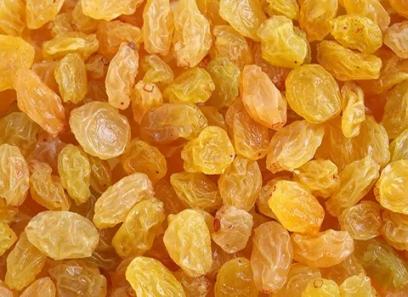

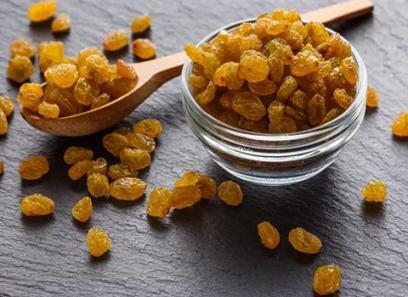


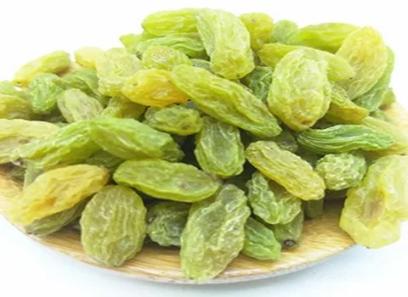
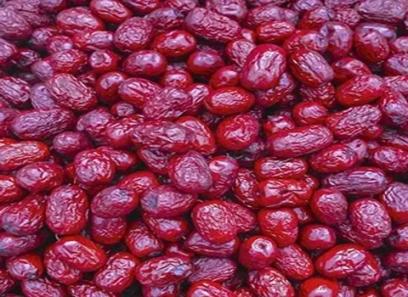
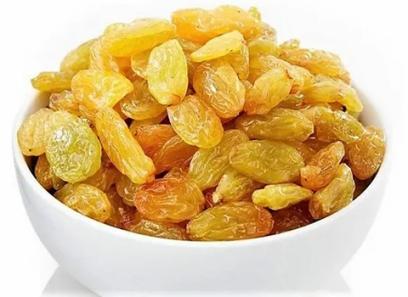
Your comment submitted.